Panamint City Backpack, March 2019
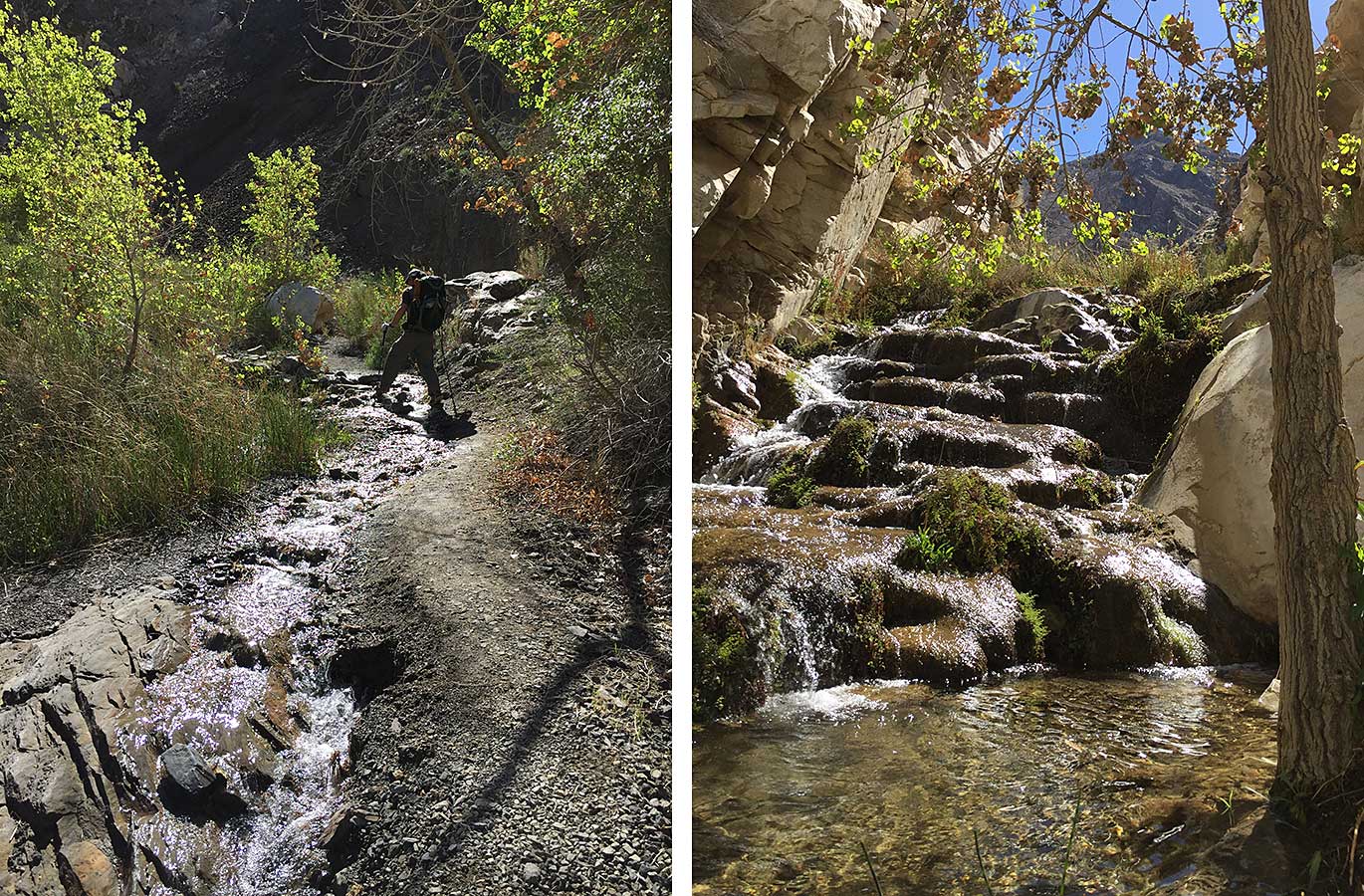
Hiking through water in the desert
The trail to Panamint City is short but steep, with some route challenges, so it takes longer than you might expect. It's 5.45 miles long with about 3,600 feet of elevation gain. The hike up Surprise Canyon takes you through rock narrows and desert brush. Oftentimes the best route is in the creek (we brought water shoes). At one point the trail becomes a waterfall of algae covered rocks (right) which we navigated very carefully. There once was a road through here until it a flash flood in 1985. Walking the rough trail, it was hard to imagine stagecoaches, mining trucks, trailers and even a conventional 50s-era sedan driving up and down this canyon.
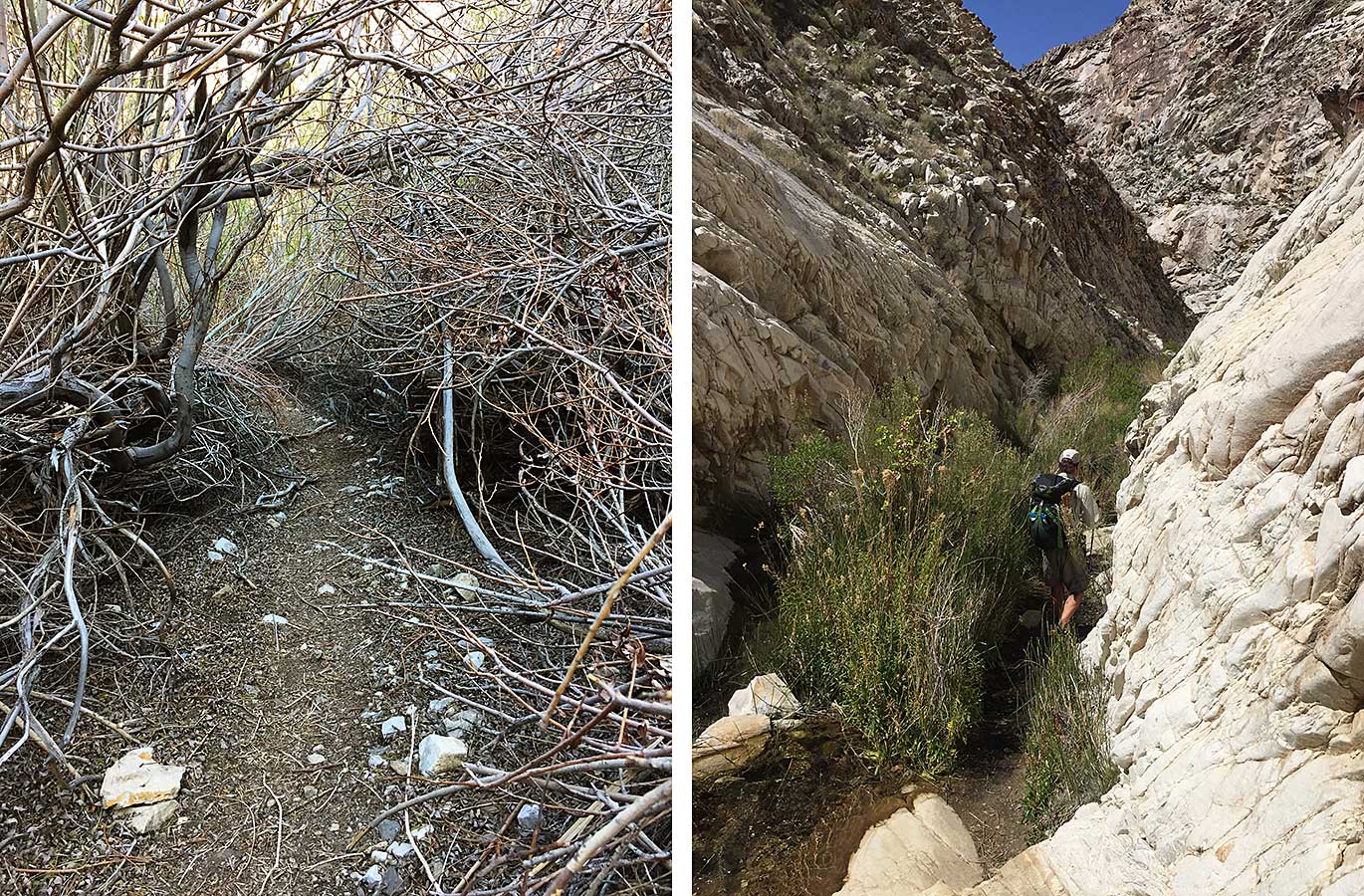
Bushwhacking
Part of what made the trail so challenging were these sections of dense brush which we had to bushwhack our way through. Can you imagine the road through these narrows in the photo on the right?
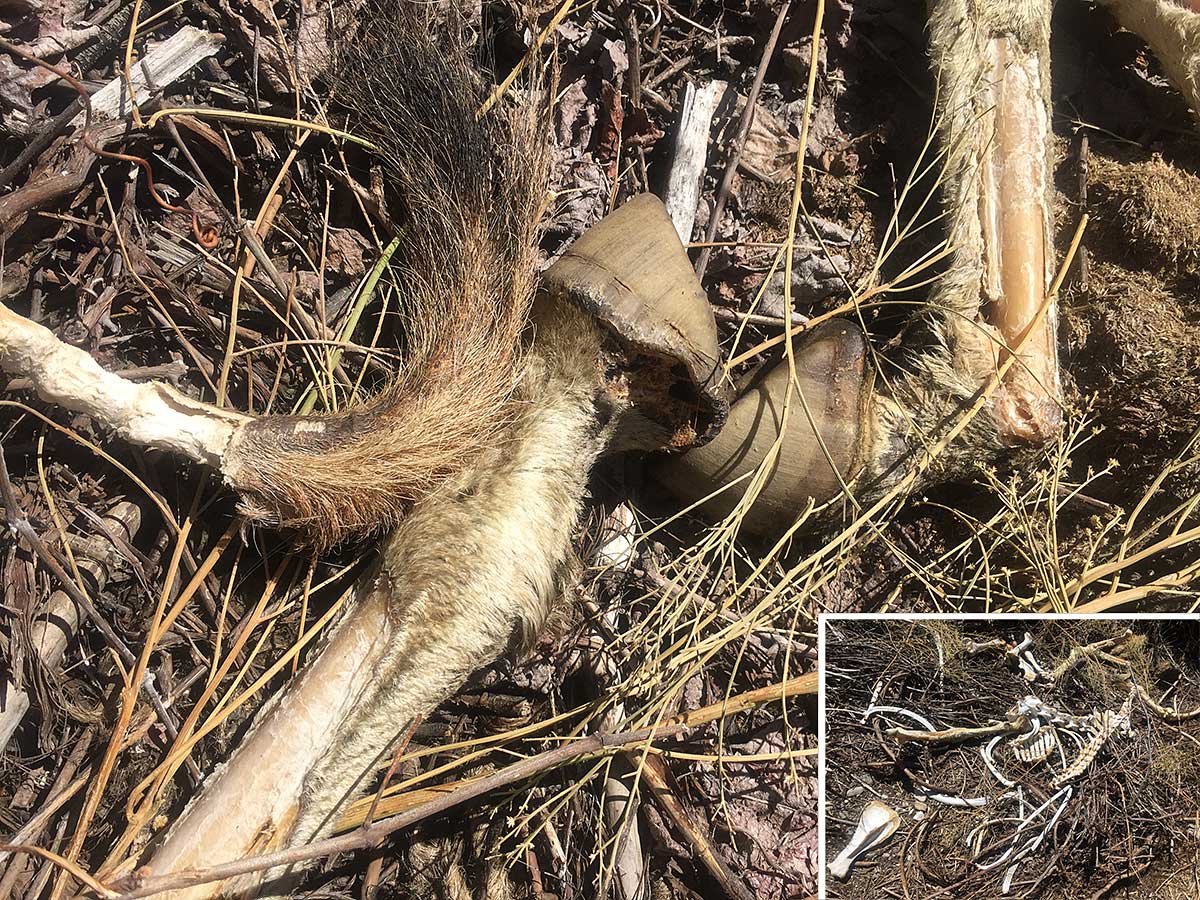
Wild Burro Skeleton
Rob really wanted to see a wild burro on our trip but all we saw were the remains of burros. I was intrigued to see the hooves and some fur still intact on this nearly complete skeleton we found near the side of the trail.
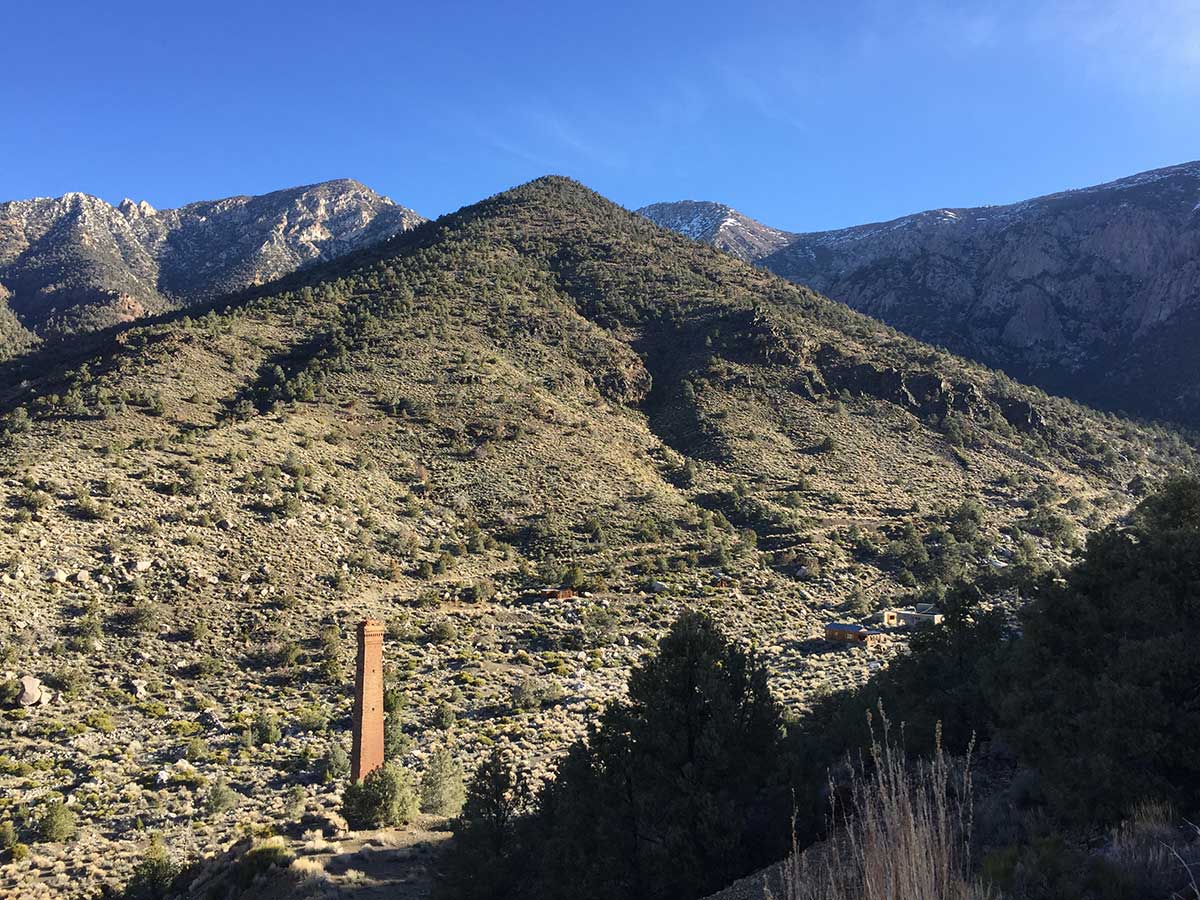
Panamint City
The ornate brick smokestack of the ore smelter is visible about a mile before you reach Panamint City. As you get closer, you pass stone ruins and abandoned wooden buildings come into view, including several old mining cabins and the remains of the stone and concrete bank building (right side).
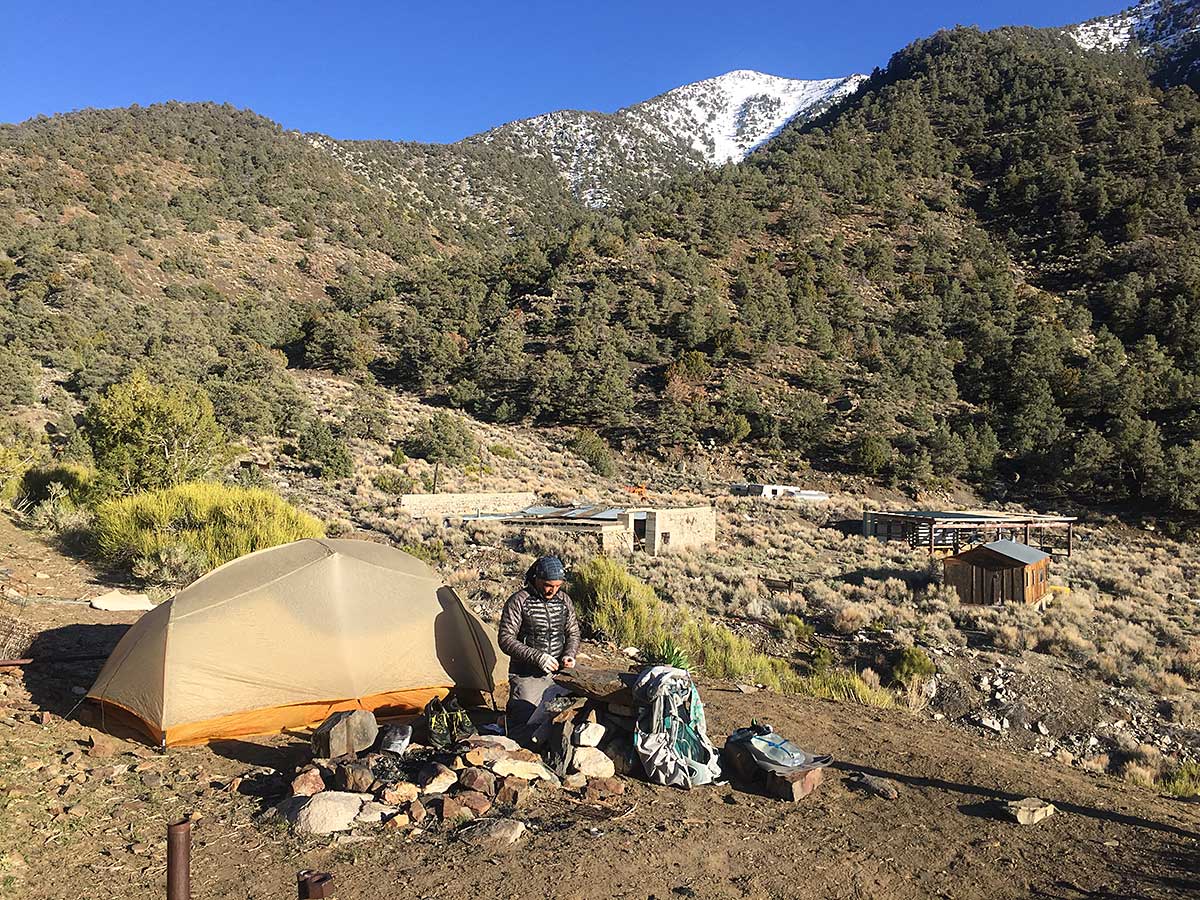
First Night Campsite
Backpackers to Panamint City will sometimes sleep in several somewhat intact old mining cabins. The wood building on the right is known as the "Panamint Hilton" and the stone building to the left of it (the former bank building) is the "Hippie Overflow." We were too creeped out by the rat droppings to consider sleeping inside so we opted to camp in our tent on the first night. It was a chilly night: we were at 6,300 feet and temperatures dropped below freezing.
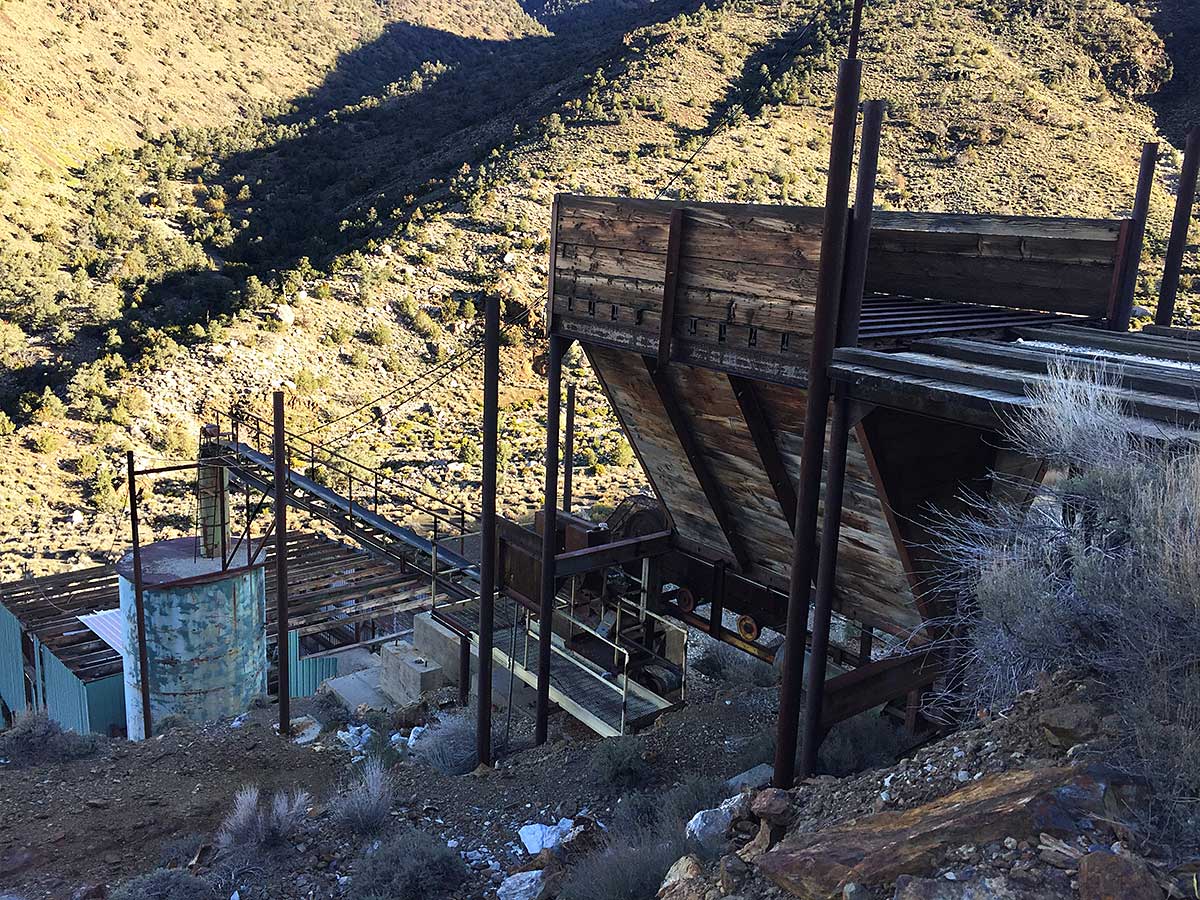
Ore Crusher
The next morning we got up early and headed out to explore the ore crusher above the brickwork of the smelter. It was surprisingly intact and impressive in size.
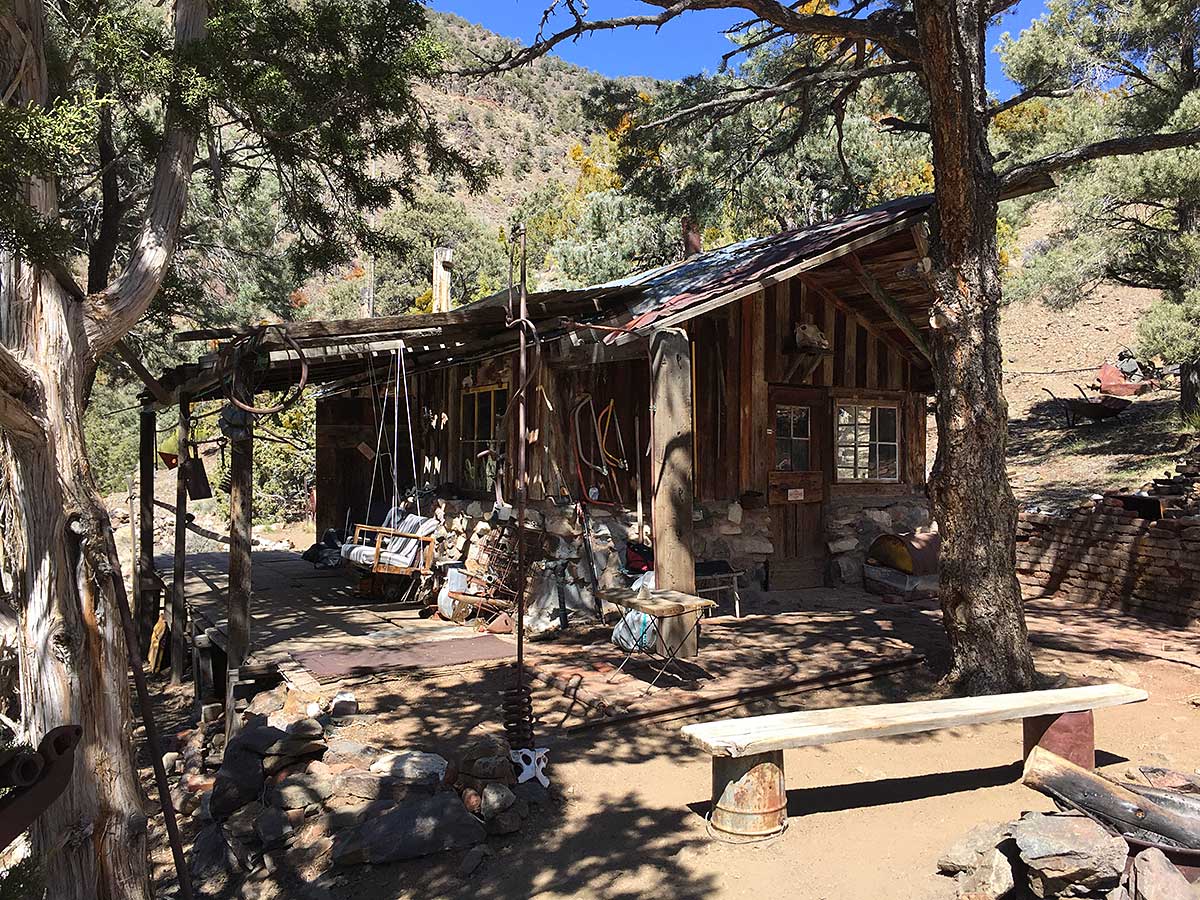
The Castle
While we were having lunch at our campsite, 2 backpackers walked by and told us that they had just vacated "The Castle" - another one of the mining cabins that people stay in. We were curious and hiked up into Sourdough Canyon to check it out. We were amazed when we saw this sweet cabin with porch swings, and flower beds shaded by pine trees.
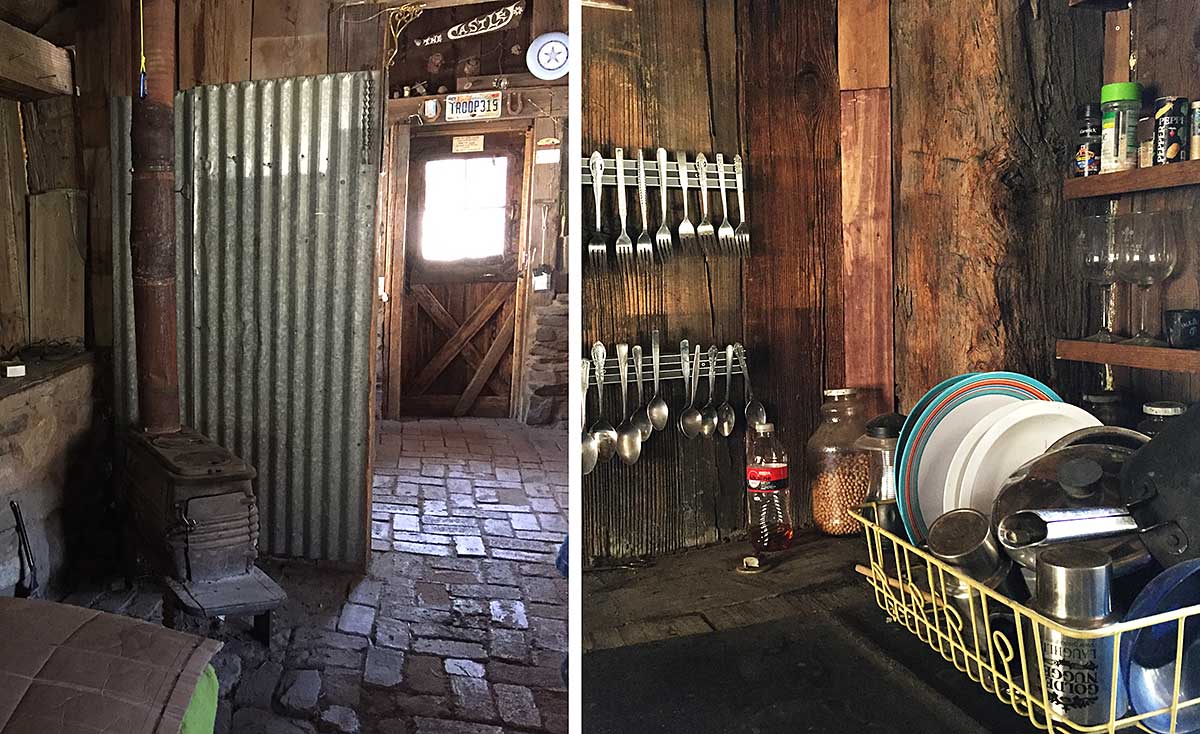
Inside The Castle
We were even more impressed when we saw the spotless interior, lovingly maintained by Boy Scout Troop 319 from La Crescenta, CA. With not a rat dropping in sight, we opted to stay there and skip another freezing night in the tent.

Hot Bath Anyone?
The Castle even had a piped in spring right near the brick patio and if you felt really ambitious, you could fill the black boiler above the bathtub with water and build a fire beneath it and have a hot bath. Having only been on the trail for 2 days, we weren't feeling desperate enough to go through all that effort.
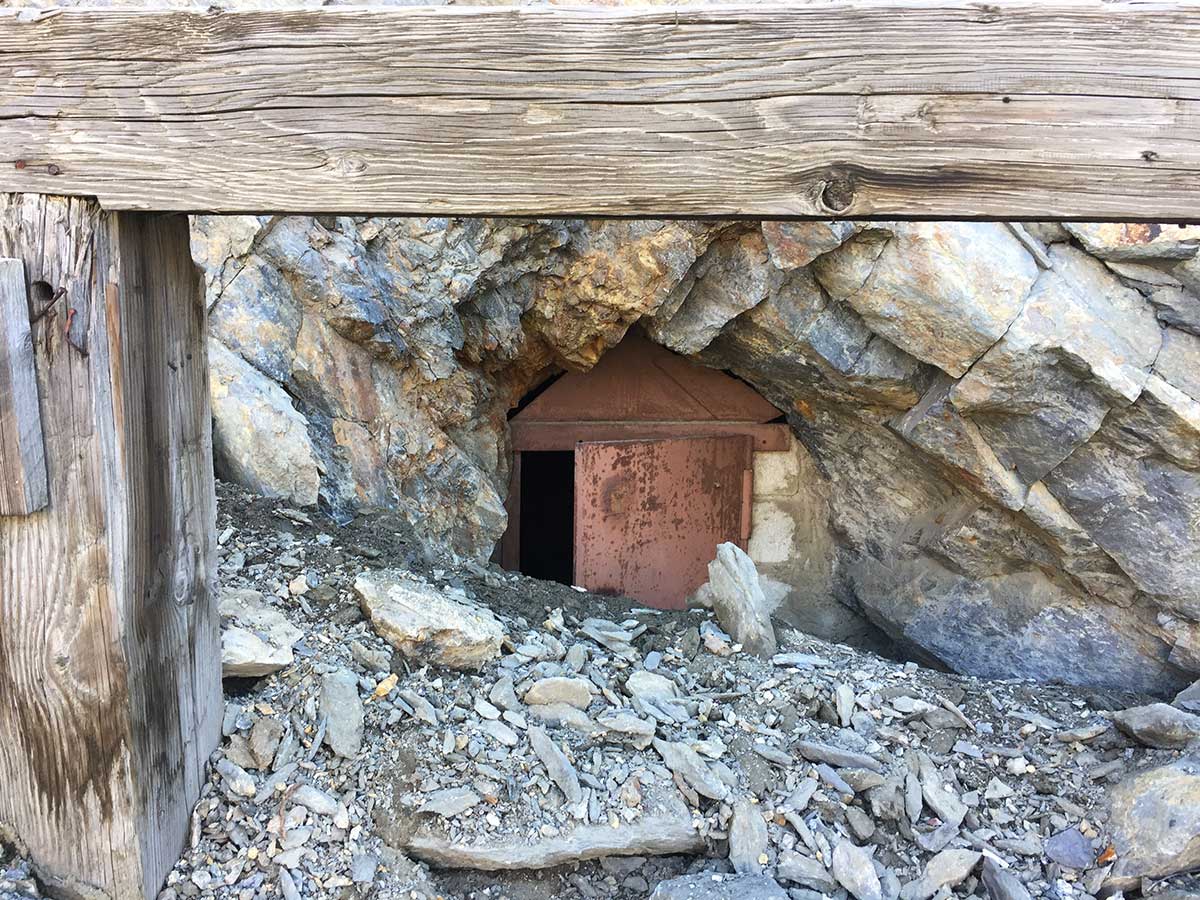
Wyoming Mine, lower mine tunnel entrance
After moving our gear to the Castle after lunch, we hiked up 1,500 feet to the lower Wyoming Mine and peeked into several mine tunnel openings.

Abandoned stuff
We came across lots of strange abandoned stuff. We started counting how many refrigerators we saw and lost track. I had to laugh when I found this toilet seat on this old chair frame. Seeing the old tricycle made me wonder what it must have been like to be a child in this rough and tumble mining town.
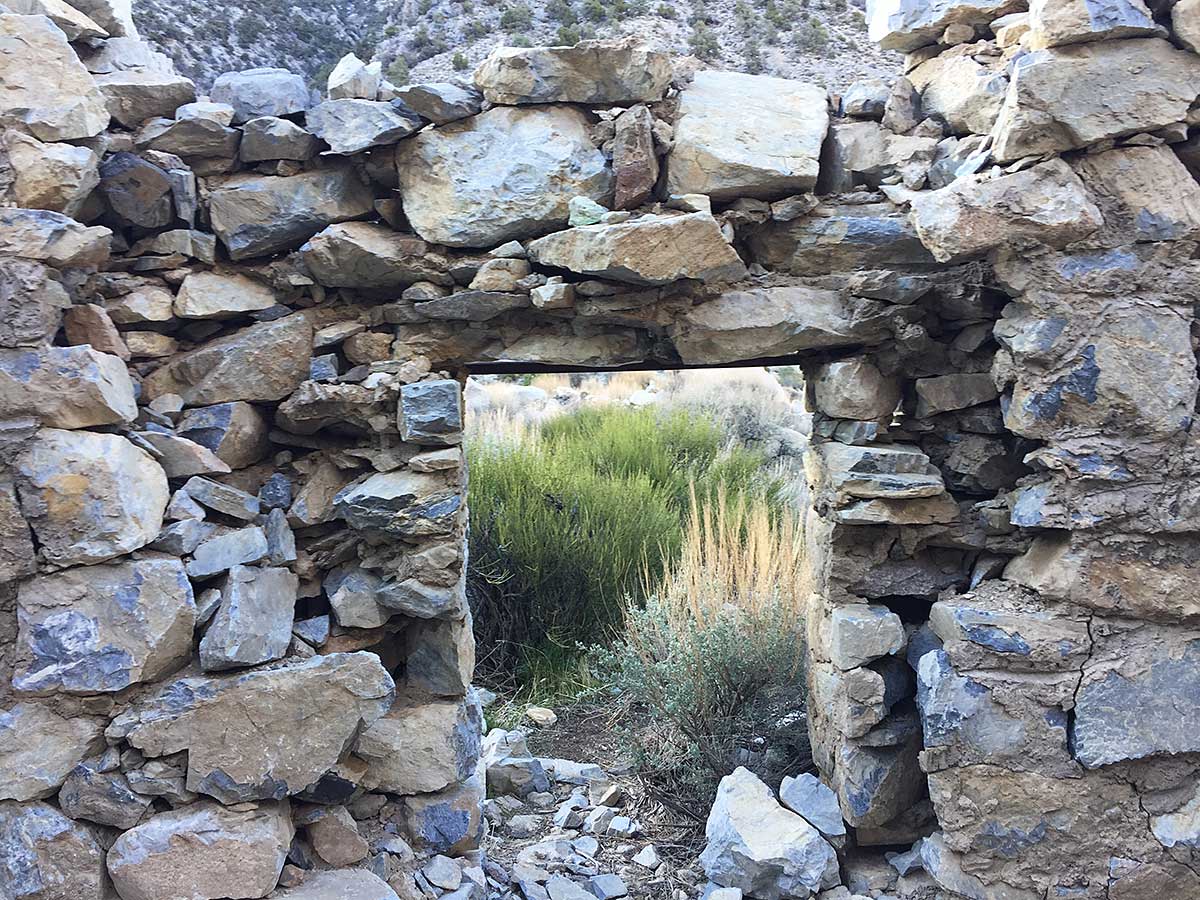
Stone Ruin
We explored several stone ruins around Panamint City, structures from the 1800s - 1920s.

Panamint City Gothic - not!<
Seeing all of the gardening tools on the wall of The Castle inspired me to try staging an "American Gothic" self portrait. Clearly I did not remember the correct pose for the portrait but I think we did a pretty good job looking somewhat deranged anyway.
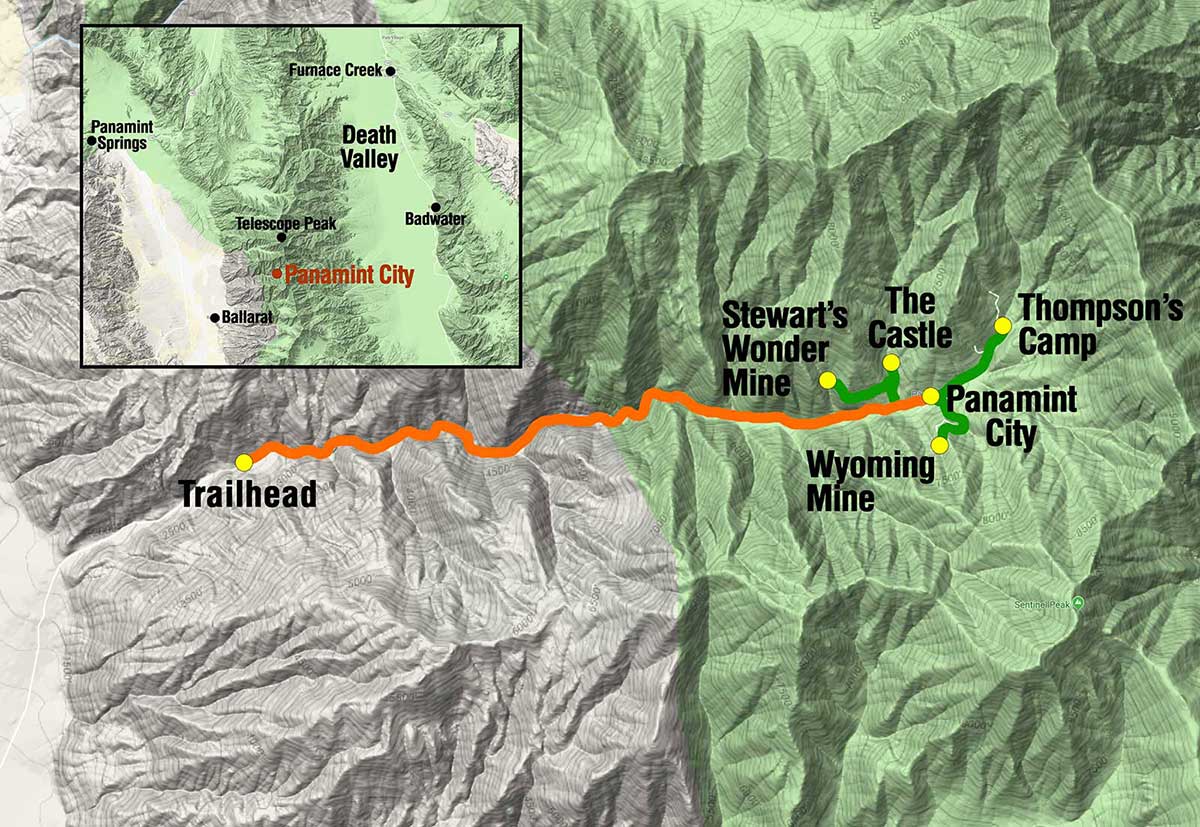
Panamint City Map
Here's a shaded relief topographic map of our trip with an inset map showing where Panamint City is located relative to prominent features in Death Valley. If you are up for some challenging terrain and getting your feet wet, I highly recommend this backpacking trip as a pleasant and charming 2.5 day trip.